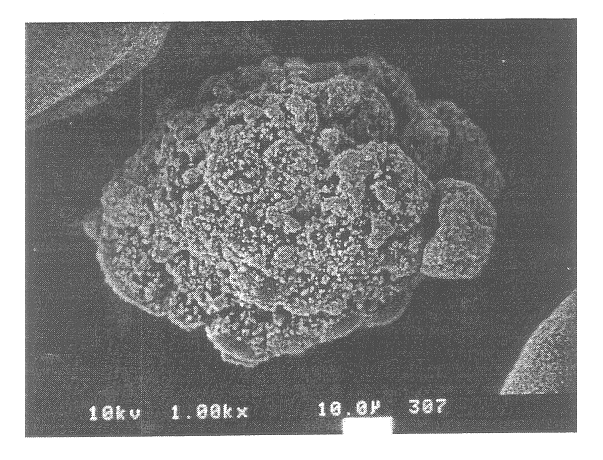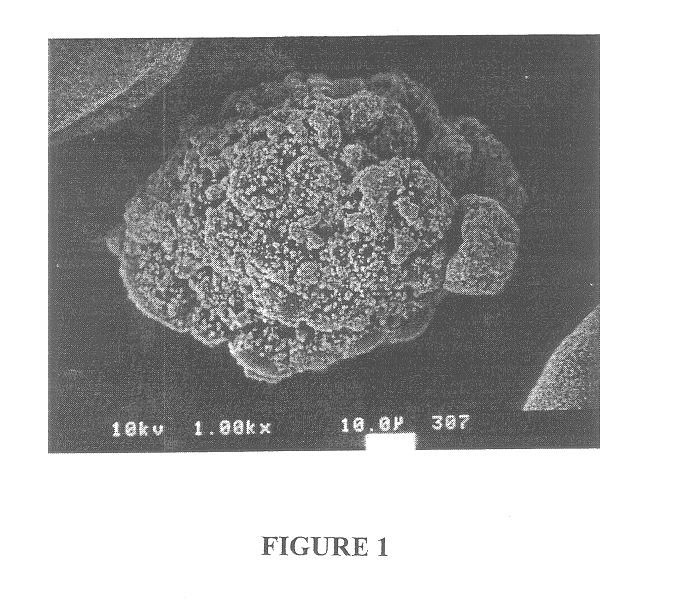Ceramic shell thermal spray powders and methods of use thereof
a technology of thermal spray powder and ceramic shell, which is applied in the field of substrate coating process, can solve the problems of large difficulty in source of imperfections in the coating, and increase the difficulty of controlling the temperature of the flame and the rate of injection, so as to achieve greater conformability to the substrate and the effect of coating thickening
- Summary
- Abstract
- Description
- Claims
- Application Information
AI Technical Summary
Benefits of technology
Problems solved by technology
Method used
Image
Examples
Embodiment Construction
In this Example the basic invention is described as applied to the production of a coating of particles comprising polyester particles coated with stabilized zirconia ceramic layer.
Preparation of the Coated Particles
A 60% solids aqueous dispersion comprising 5.8 wt %, (20 vol %), of a polyester available from Saint Gobain Performance Plastics under the tradename "Ekonol"; 94.2 wt % of yttria-stabilized zirconia, (8 wt % yttria); 0.25 wt % of a surfactant available from Vanderbilt Co. under the trademark "DARVAN.RTM." 821A; 0.25 wt % of a surfactant available from Atlas Powder under the trademark "BRIJ.RTM." 35; 2 wt % of a polyvinyl alcohol temporary binder; and a drop of an antifoam agent available from Air Products under the trademark "TYGO.RTM.".
The average particle size of the stabilized zirconia particles was about 5 micrometers and the average particle size of the Ekonol polyester particles was about 50 micrometers.
The dispersion was spray dried using a Niro model #SD 6.3-R us...
PUM
| Property | Measurement | Unit |
|---|---|---|
| particle size | aaaaa | aaaaa |
| particle size | aaaaa | aaaaa |
| particle size | aaaaa | aaaaa |
Abstract
Description
Claims
Application Information
 Login to View More
Login to View More - R&D
- Intellectual Property
- Life Sciences
- Materials
- Tech Scout
- Unparalleled Data Quality
- Higher Quality Content
- 60% Fewer Hallucinations
Browse by: Latest US Patents, China's latest patents, Technical Efficacy Thesaurus, Application Domain, Technology Topic, Popular Technical Reports.
© 2025 PatSnap. All rights reserved.Legal|Privacy policy|Modern Slavery Act Transparency Statement|Sitemap|About US| Contact US: help@patsnap.com



